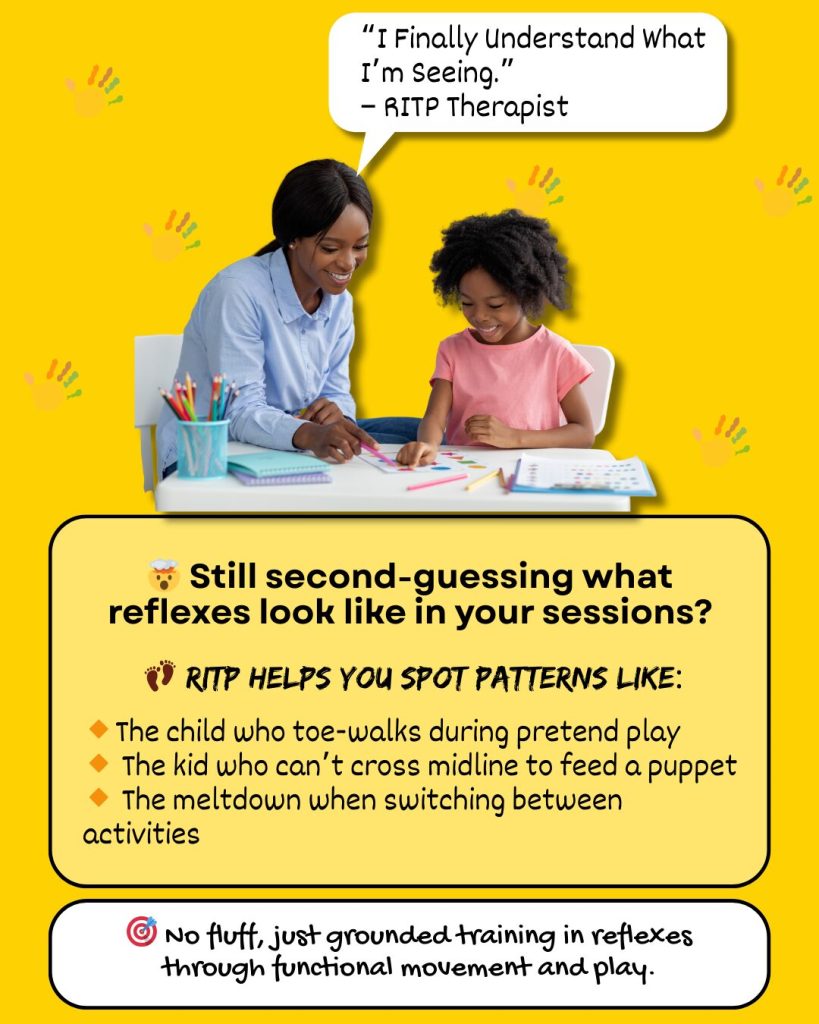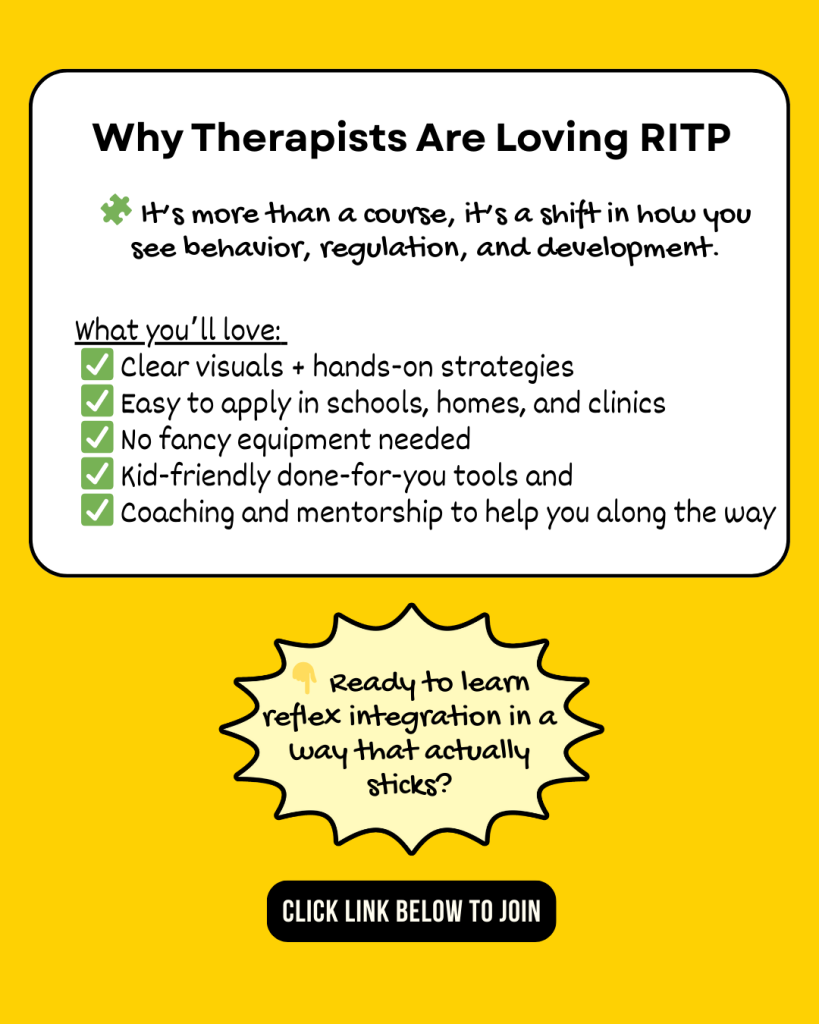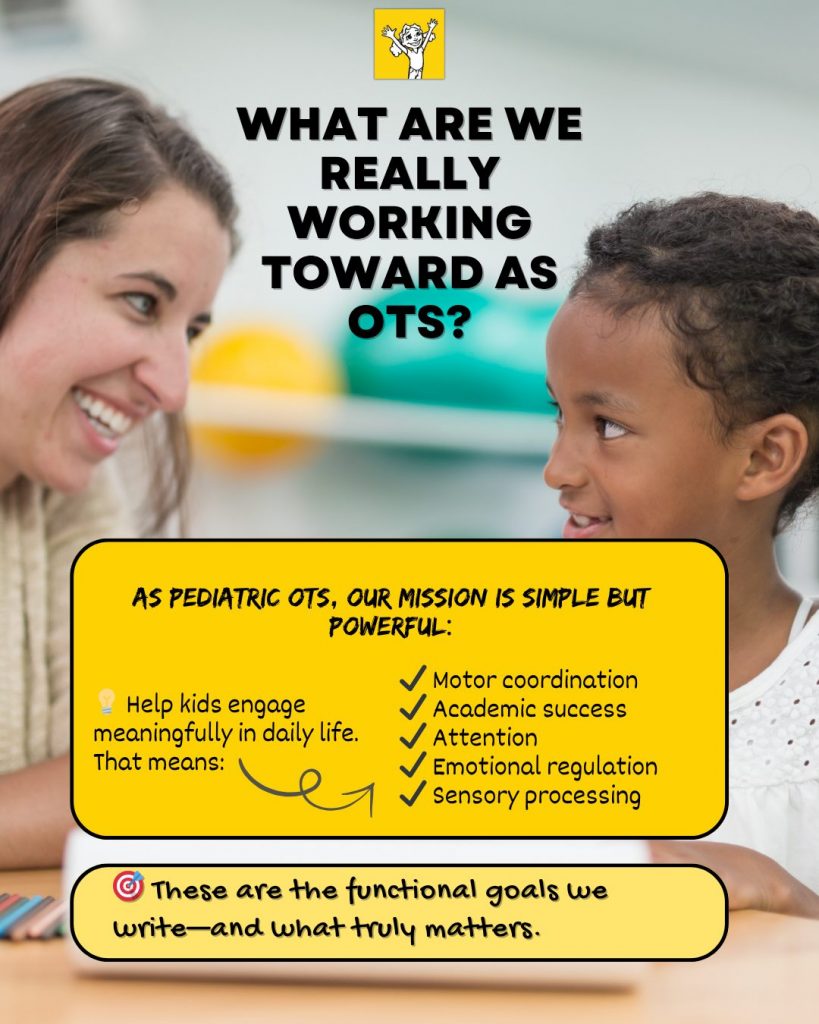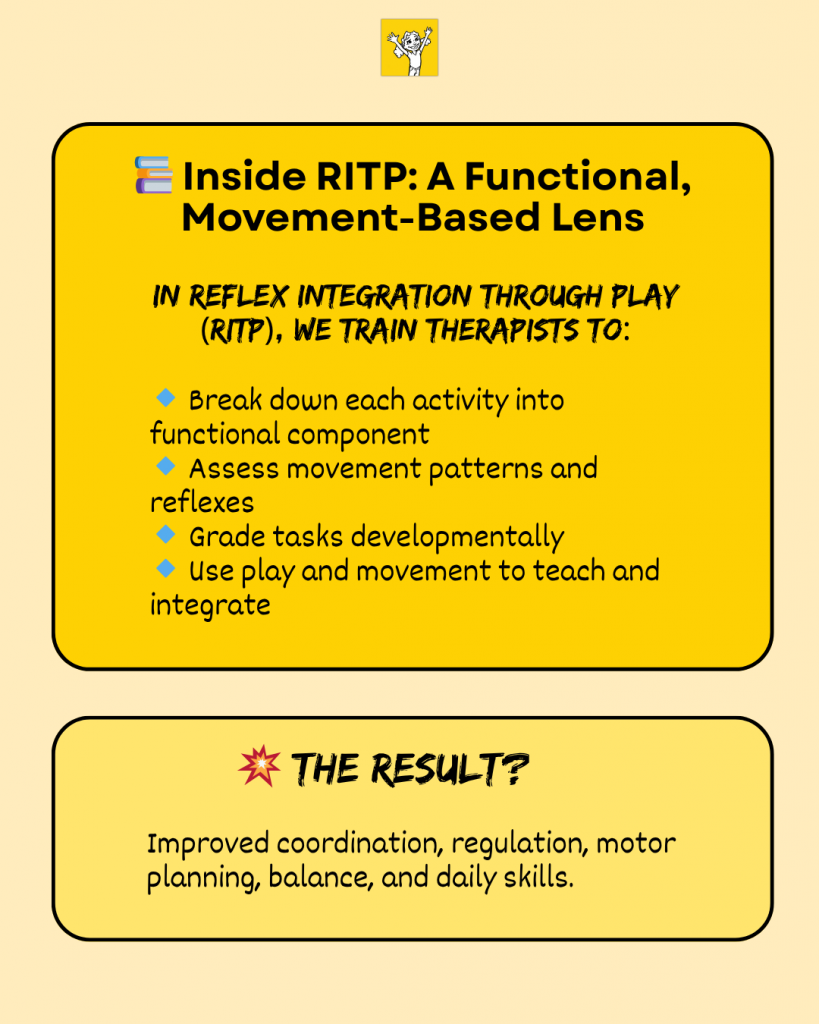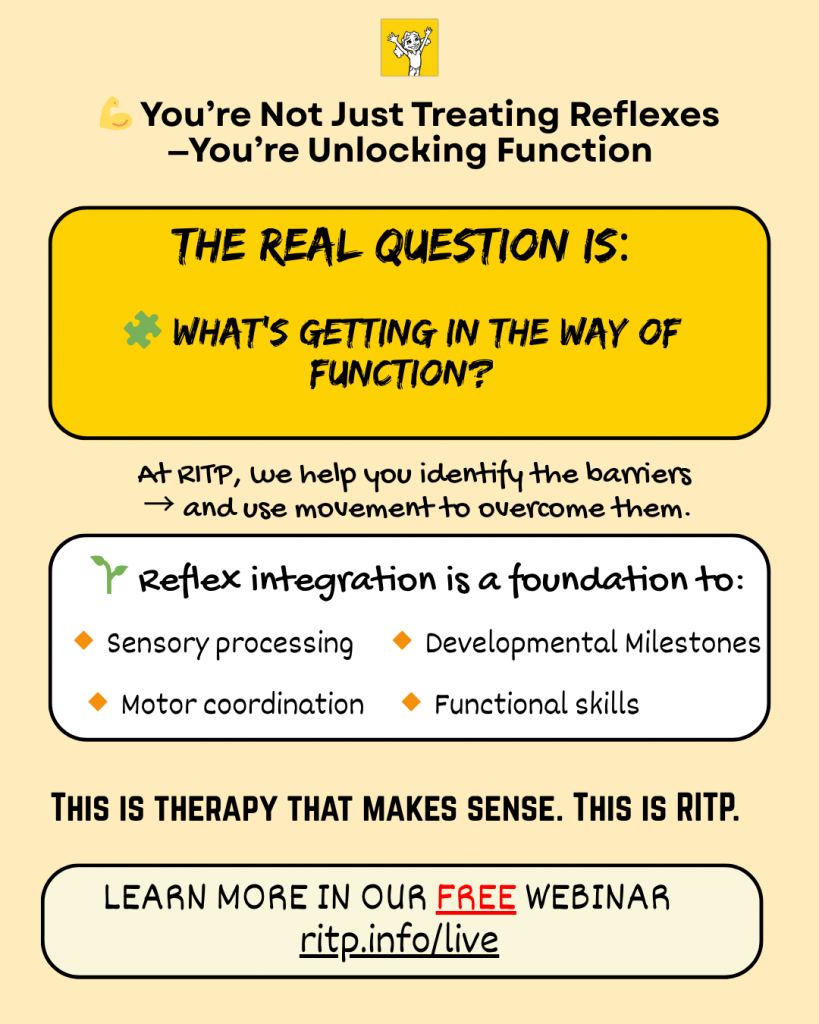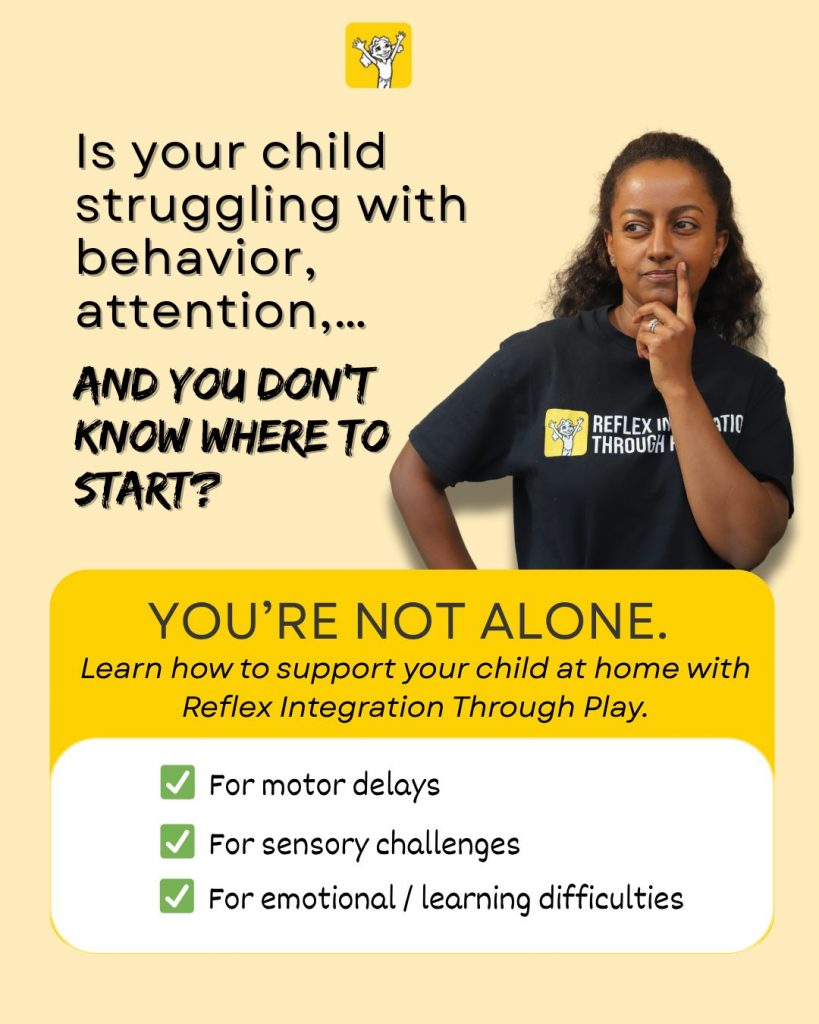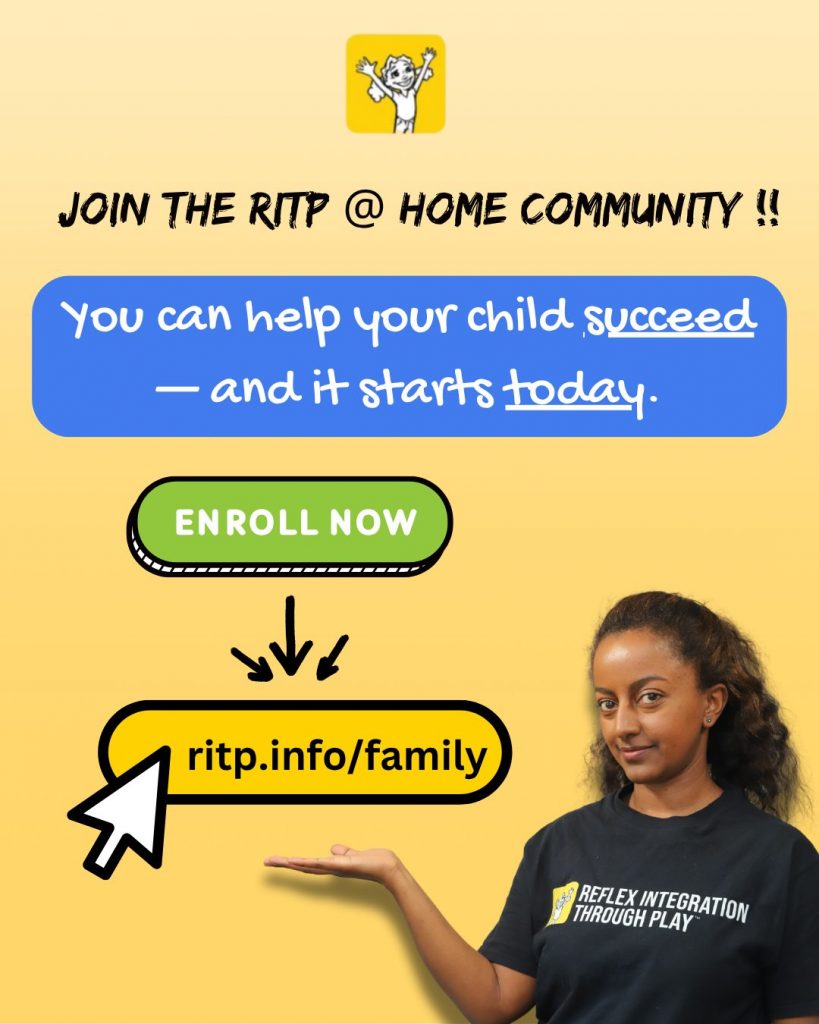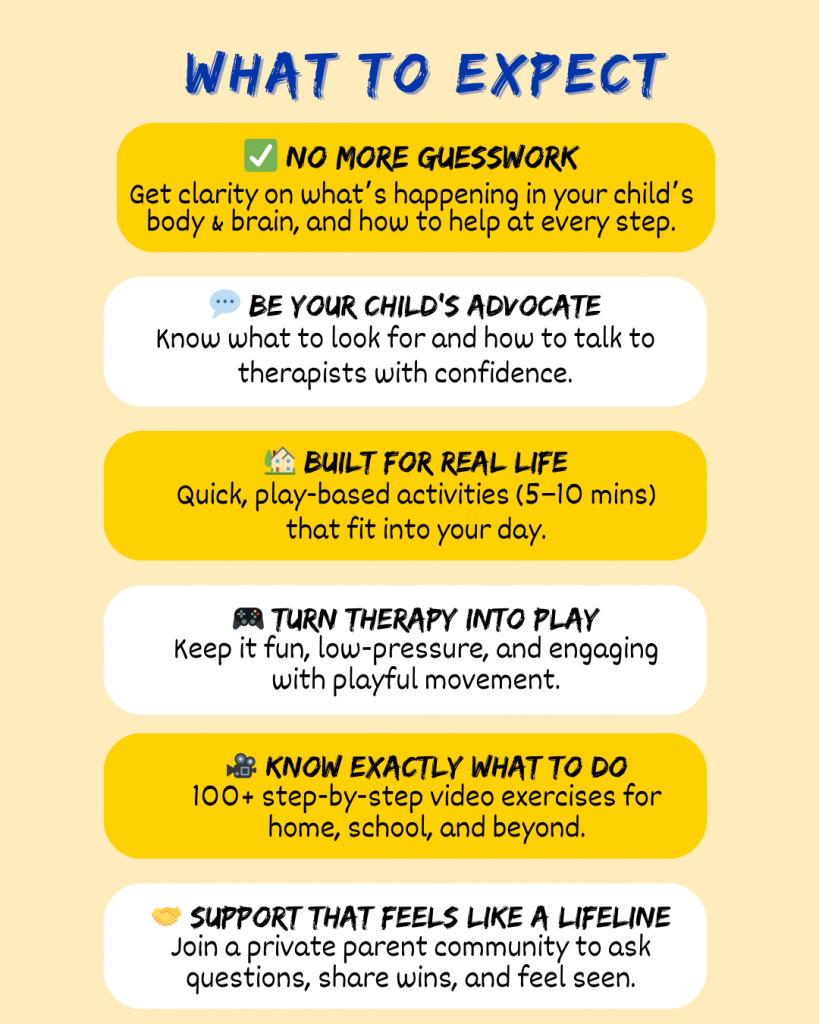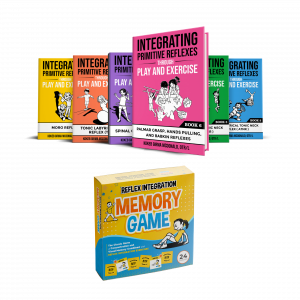What Are Primitive Reflexes?
Primitive reflexes are automatic movement patterns that develop before birth and help newborns with survival functions like feeding, breathing, and movement.
As the brain matures, these reflexes should naturally integrate, meaning your child gains control over movements instead of reacting automatically. This usually happens within the first one to three years of life.
When reflexes remain active beyond a specific stage, they can impact everything from posture and coordination to learning and emotional regulation.
Why Do Reflexes Sometimes Stay Active?
There’s no single cause for retained reflexes. At Reflex Integration Through Play (RITP), we emphasize a holistic, root-cause approach, looking at the whole child rather than isolated symptoms.
Some common contributing factors include:
- Birth trauma or prolonged labor
- Premature birth or C-section delivery
- Skipped milestones (like crawling or rolling)
- Limited tummy time or restricted movement
- Early illness, injury, or sensory deprivation
- Developmental delays
Each child’s story is different, which is why understanding their full developmental and sensory background is key. Please consult a qualified professional.
Common Signs of Retained Reflexes
Parents often start noticing patterns in everyday life that suggest their child might have retained reflexes. Here are some common signs to look for:
- Poor posture or slouching
- Clumsiness, tripping, or dropping things frequently
- Difficulty sitting still or focusing in class
- Fatigue during handwriting or fine motor tasks
- Overreaction to sounds, textures, or movement
- Motion sickness or sensory sensitivities
- Picky eating or texture aversions
- Challenges with potty training or bedwetting
- Emotional outbursts or frustration with simple tasks
If several of these sound familiar, it may be helpful to work with an occupational therapist trained in reflex integration.
What Parents Can Do
If you suspect your child may have retained reflexes, start by observing and recording what you notice:
- When do challenges appear most often?
- How does your child respond to new or stimulating environments?
- What does sleep, focus, or transitions between tasks look like?
Bring these observations to your child’s therapist. It helps them form a clearer picture, especially since kids often act differently in clinical settings versus at home.
A more holistic view allows for a more effective and personalized treatment plan.
How Reflex Integration Through Play Helps
Inside RITP, we teach parents and therapists to assess and support reflex integration using play-based methods, because children learn best when they’re engaged, curious, and having fun.
Through our Home Program and the RITP App, families can:
- Access 5–10 minute activities that target specific reflexes
- Follow step-by-step visual instructions
- Learn to observe reflex patterns at home
- Encourage brain-body connection through movement
Our RITP App offers a free 3-day trial, allowing you to explore the activities and find what best supports your child’s needs.
Reflex Integration Isn’t Just for Kids
Reflex work benefits people of all ages. Adults and even older teens can carry retained reflex patterns—especially after trauma, stress, or injury.
By retraining the body to respond intentionally, reflex integration supports better posture, balance, coordination, and emotional regulation at every stage of life.
Final Thoughts
Recognizing retained reflexes is the first step toward empowering your child’s growth, focus, and confidence. Whether you begin at home or with a trained therapist, small consistent steps can make a big impact.
✨ Try the RITP App for a free 3-day trial.
📚 Learn more and explore resources at ritp.info/shop
🎧 Listen to Episode 38 now to explore how to explore how to recognize retained primitive reflexes, understand the signs, and learn how play-based activities can support your child’s integration and overall development.
Episode Breakdown:
00:00 Introduction to Reflex Integration
00:15 Understanding Primitive Reflexes
01:58 Identifying Retained Reflexes
03:51 Observing and Collecting Data on Student Behavior
05:43 Parental Guidance and Data Collection
07:02 RITP Resources and Programs
08:57 Conclusion and Final Thoughts
And don’t forget to check out the RITP App for step-by-step guidance and progress tracking.
Reflex Integration Through Play at School
Transform Learning and Sensory Regulation Through Play-Based Movement
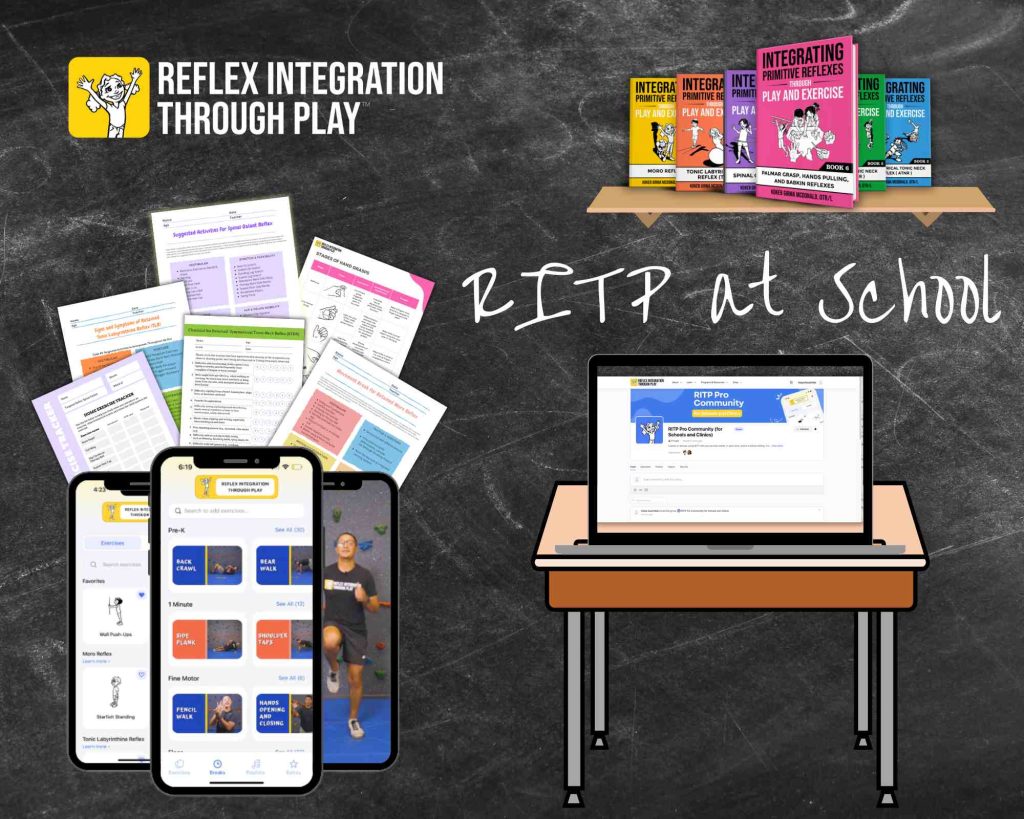
Ever finish a reflex training and think…
“Now what?” 🤷♀️
That’s why so many therapists are switching to the Reflex Integration Through Play (RITP) Certification—because it doesn’t just teach you what reflexes are… it shows you how to see them in action and support kids through play.
Built for real life, real kids—whether in the clinic, classroom, or at home.
👇 Take a peek at why so many professionals are joining us👇
Overwhelmed by complex treatment plans?
Join us and discover a proven system that works!
Parents: Are you tired of daily struggles with focus and attention, homework meltdowns, or motor delays?
The RITP Family Bundle helps kids move better, focus longer, and feel calmer — all through simple, play-based exercises that fit into real life.


